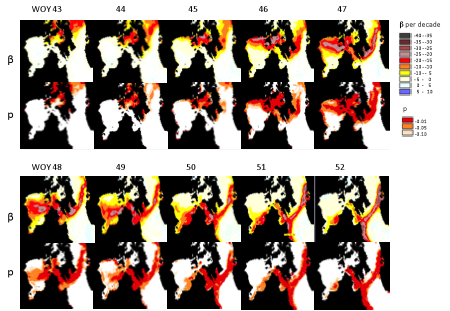Seasonal ice formation in the and around the STAR study area is of particular interest as the presence (or absence) of ice has an impact on the weather systems in the region through an increase in the exchange of energy from the ocean to the atmosphere. General circulation model (GCM) simulations suggest that there may be an increase in cyclogenesis and wind speeds in the region in the coming years in part due to reductions in sea ice cover. The main objective of Dr. Barberís research group is to examine regional ice formation in and around the STAR study site and its relationship to synoptic activity/intensity.
Various data sets (such as CANGRID, passive microwave, Canadian Ice Service, North American Regional Reanalysis (NARR)), and techniques have been used to isolate the relationship between specific parameters such as temperature and sea ice extent, as well as sea ice motion with atmospheric circulations.

Sea ice concentration trends from 1979-2008 for the STAR domain during fall and winter, from weeks 43 to 52 based on satellite passive microwave data. The analysis illustrates a significant decline in sea ice concentrations in Hudson Strait and Davis Strait in fall.